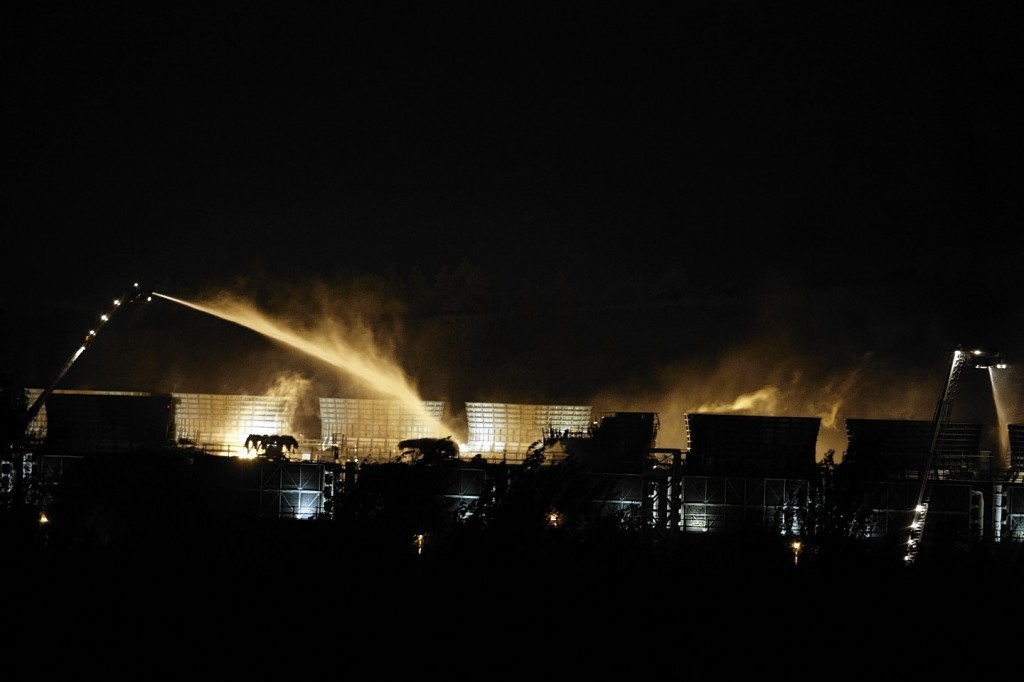
Fire investigation officers are due to travel to the site of a gas-fuelled power station following a major blaze.
More than 25 fire appliances raced to the Didcot B power station last night as flames ripped through a cooling tower.
Such was the scale of the blaze, firefighters from neighbouring services 30 miles away had to be drafted in and officers remained at the scene this morning.
Officials said they are confident the fire will not dent electricity supplies.
A spokeswoman at Oxfordshire Fire Service confirmed investigating officers will visit the scene this morning, and said they are likely to remain there throughout the day.
Natural gas powered Didcot B, which opened in 1997, generates up to 1,360 MWe of electricity – enough to power a million homes.
Around 12 fire crews attended the facility at around 9pm, but that number doubled as the flames took hold.
However, officials at the RWE npower owned site – who carry out regular safety drills – managed to shut down the site quickly to stop the incident turning into an inferno.
As firefighters toiled, onlookers were stunned by the sight of the orange flames licking the night’s sky.
Local resident Daniel Anderton tweeted: “It was well alight. Lots of fire brigade, police and helicopters.”
Fellow Didcot local Amy Lambourne said: “It still looked very bad even after an hour.”
It is not clear how the fire started, but officials have ruled out arson or terrorism.
A spokesman for RWE npower said: “We can confirm that no one is injured which is clearly the most important thing and also that the fire is now under control.
“Obviously the plant has been shut down.”
The spokesman added it was “too early to say” how much damage had been caused.
Energy Secretary Ed Davey said: “First, I want to thank the emergency services who are at Didcot working to tackle the blaze.
“I’ve been reassured by National Grid that there is no risk to electricity supplies.
“I will be keeping in touch with the relevant authorities throughout. My priority is to understand the cause of the fire and get the affected unit back generating electricity as soon as it’s safe to do so.”
